Since humans first set foot on the Moon and planted the American flag in its soil, people have been fascinated by the thought of seeing these historical artifacts from their backyard. With advances in telescope technology and the increasing interest in amateur astronomy, the question arises: Can you use a telescope to see the flag on the Moon?
Unfortunately, you cannot see the flag on the Moon with a telescope. A telescope to view the roughly 4 feet (125 cm) long flag would need to be around 650 feet (200 m) in diameter, a size that does not exist. However, there are many objects you can see on the Moon with a telescope, and some interesting facts about the Moon, telescopes, and optical resolution.
In this article, you get
A deep understanding of why we can’t see the Apollo landing site flag using a telescope
A look at what we can see using a telescope
A closer look at the capabilities of the Hubble and James Webb Space Telescopes
Evidence of the Apollo Moon Landing
Photos of the flag on the moon, as photographed by the Lunar Reconnaissance Orbiter
To learn how many flags are on the Moon
By the end of this article, you’ll have a detailed understanding of why you can’t see the lunar flag using a telescope and much more!
Let’s dive right in.
Can You Use a Telescope to See the Flag on the Moon? Introduction

Telescopes provide a unique window into the cosmos and have allowed us to observe the Moon with incredible detail. From seeing craters to identifying mountain ranges, enthusiasts like you and I are eager to explore the lunar surface and potentially glimpse the ultimate prize: the flag left behind by the Apollo astronauts Neil Armstrong and Buzz Aldrin.
However, this enchanting idea demands a closer look at the limits of telescope technology.
The Flag on the Moon
In this section, let’s explore the placement of American flags on the Moon and whether we can see them using a telescope.
Apollo Missions and Flags
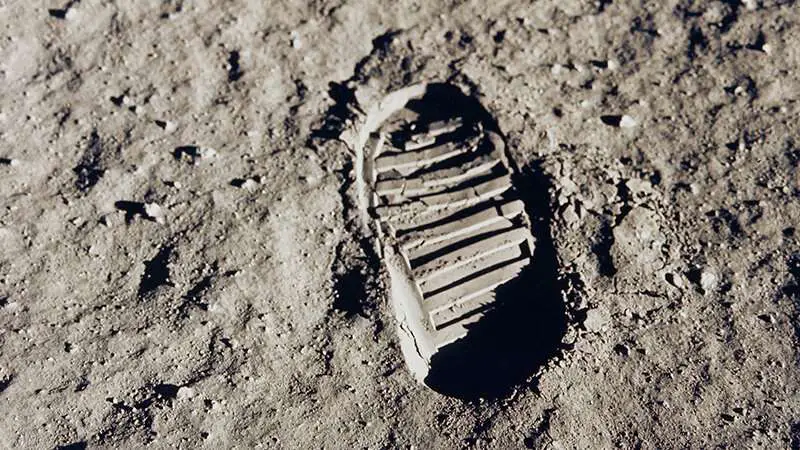
The Apollo missions placed seven American flags on the lunar surface, each set there by a different astronaut on a further Apollo mission. These flags serve as a symbol of human achievement and exploration beyond Earth.
Some have wondered, can you see the American flag on the moon with a telescope?
Unfortunately, even the mighty Hubble Telescope is not strong enough to capture images of the flags on the Moon.
To see the flag, which is 4 feet (125 cm) long, you would need an optical wavelength telescope around 650 feet (200 meters) in diameter. Such telescopes do not currently exist, making it impossible to view the flags from Earth.
While observing the flags through telescopes is not feasible, their locations and historical significance continue to inspire curiosity and interest in space exploration.
The Limits of Telescopes
Optical Resolving Power
Your telescope’s ability to see the flag on the Moon depends on its optical resolving power. As mentioned above, the US flag on the Moon is about 4 feet long, and you’d need a telescope with an aperture of about 650 feet to see it.
Dawes Limit for Resolution
The Dawes limit is a formula that describes the theoretical resolution limit of a telescope, which is the smallest angular separation between two objects that you can distinguish as separate.
The formula is R = 4.56/D
- R is the resolution in arcseconds
- D is the diameter of the telescope’s primary mirror or lens in millimeters
The Dawes limit is critical to understand why we can’t see the flag on the Moon using a telescope on Earth because it sets a fundamental limit on the resolution of telescopes.
For example, according to the Dawes limit, the resolution of a telescope with a diameter of 4 inches (100 mm) is about 1.2 arcseconds. This means that two objects that are closer together than 1.2 arcseconds will appear as a single object in the telescope’s image.
The flags left on the Moon by the Apollo missions correspond to an angular size of about 0.5 arcseconds when viewed from Earth.
This is much smaller than the resolution limit of even the largest telescopes on Earth. No telescope on Earth can resolve the flag on the Moon as a distinct object.
In summary, the Dawes limit is a fundamental limit on the resolution of telescopes. It is essential to understand in the context of why we can’t see the flag on the Moon using a telescope on Earth.
According to the Dawes limit equation, the flag is too small to be resolved by even the largest telescopes on Earth.
Can the Hubble or James Webb Space Telescope see the flag on the Moon?
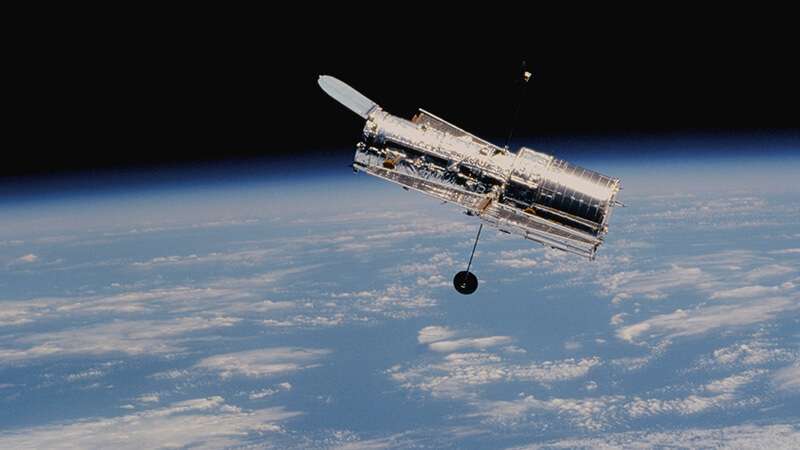
The Hubble Space Telescope and the James Webb Space Telescope are powerful instruments for observing the universe. Still, they are not designed to observe objects on the Moon’s surface, such as the flags left by the Apollo missions.
The resolution of the Hubble Space Telescope is not high enough to see objects as small as the flags on the Moon.
The James Webb Space Telescope has a much higher resolution than the Hubble but was not designed to observe the Moon’s surface in detail.
Both telescopes are optimized for observing distant objects in space, such as galaxies, nebulae, and stars.
However, the Lunar Reconnaissance Orbiter (LRO), a NASA spacecraft orbiting the Moon since 2009, has captured images of the Apollo landing sites, including the flags left behind by astronauts.
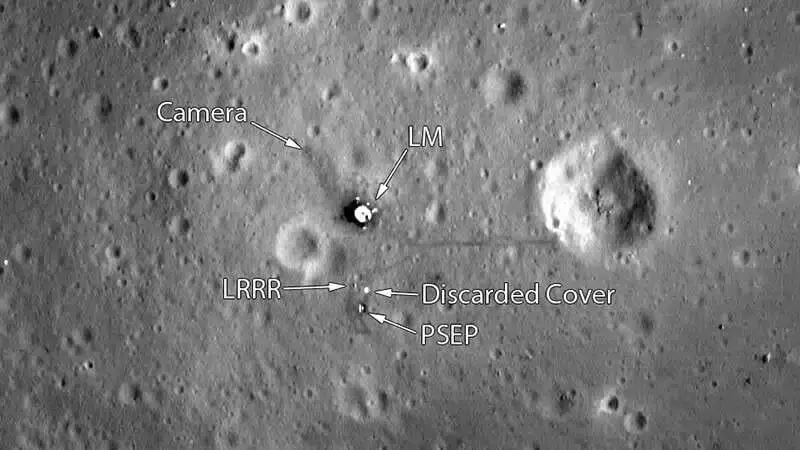
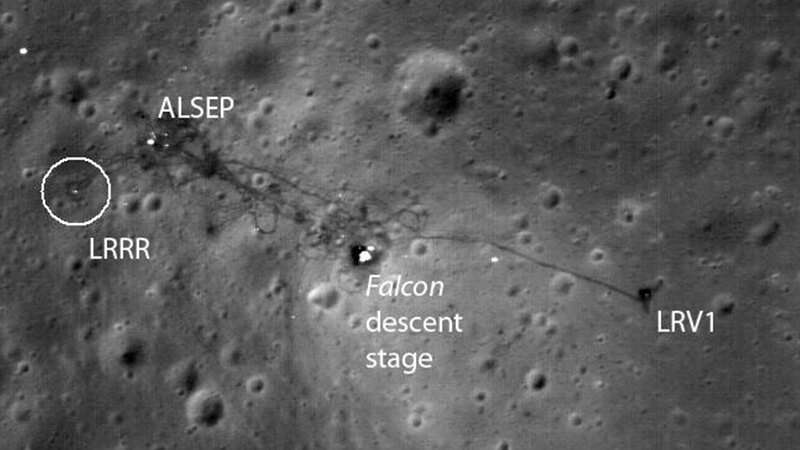
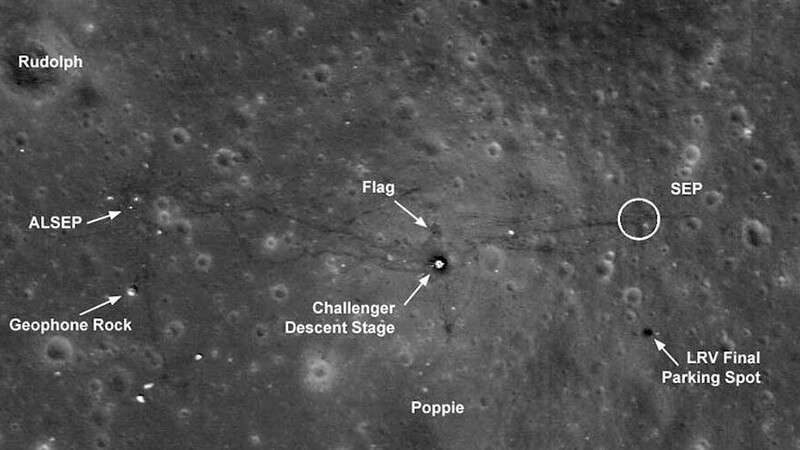
The LRO’s cameras are designed to capture high-resolution images of the Moon’s surface, and they have been able to resolve the flags and other objects left by the Apollo missions. These images from NASA confirm that the flags are still on the Moon.
While the Hubble and James Webb Space Telescopes cannot see the flag on the Moon, they are still valuable tools for studying the universe and expanding our understanding of the cosmos.
And even if they were powerful enough, you couldn’t use these telescopes very well from Earth due to atmospheric distortions.
Atmospheric Distortions
Telescope users also have to consider atmospheric distortions. When viewing objects from the Earth’s surface, the atmosphere can cause blurred or wavy images. This distortion limits the visibility of small details like the flag on the Moon, even if your telescope has sufficient resolving power.
Size of Telescope Required to See Flag on Moon
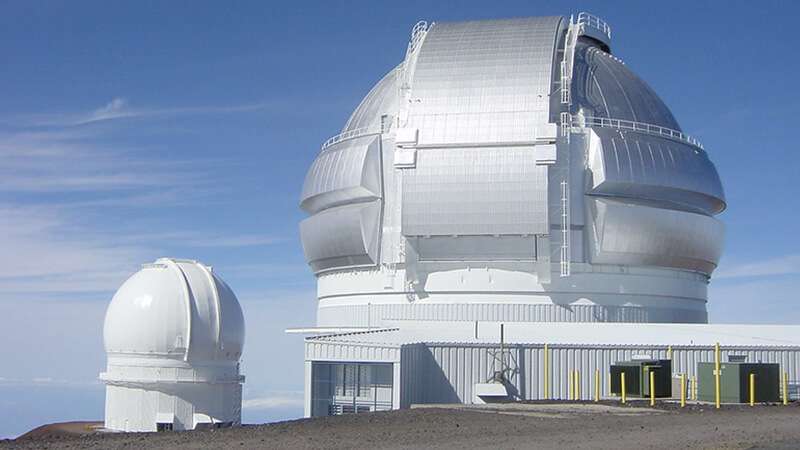
To spot the flag on the Moon with a telescope, you would need a powerful telescope with a massive diameter of about 650 feet.
The largest optical wavelength telescope on planet Earth is the Keck Telescope in Hawaii, with a diameter of only 33 feet (10 m). This small diameter falls short of the requirement to see the Moon flag.
While your typical telescope may not be powerful enough to view the lunar flag, it can still provide a detailed view of lunar craters. Lunar craters are around half a mile (1 km) in length. So, although seeing the flag on the Moon remains a challenge, you can still enjoy observing other fascinating features of Earth’s closest celestial neighbor.
Items of Interest on the Moon That Earth-based Telescopes Can See
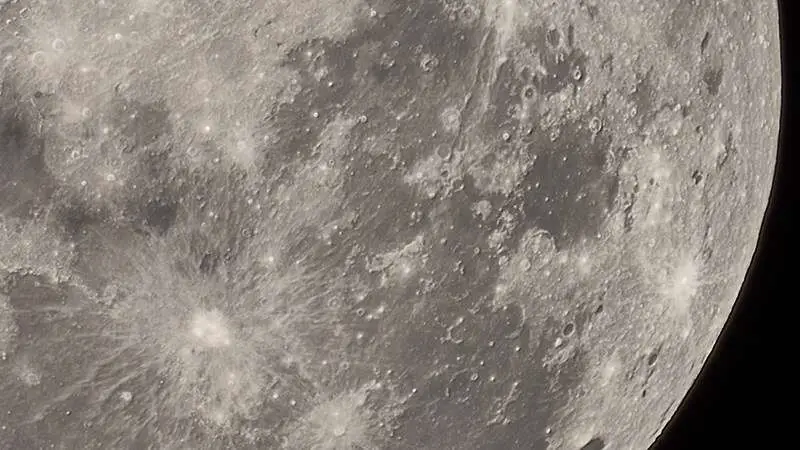
For a closer look at the Moon, telescopes come in handy. They allow you to explore various craters, mountains, valleys, and more.
Significant craters provide excellent starting points for observing the Moon’s surface. You can view prominent craters such as Tycho and Copernicus, named after famous scientists and philosophers.
There are also intriguing features like lunar maria – large, flat basins filled with solidified lava – and the bright lunar highlands, which carry unique details about the Moon’s geological history.
Other captivating sights include the terminator line, which separates the bright and dark sides of the Moon, and Earthshine, a softly glowing crescent reflecting Earth’s light to us.
By utilizing a telescope, you’ll be able to catch glimpses of these fascinating elements and expand your understanding of Earth’s natural satellite.
Evidence of Apollo Moon Landings
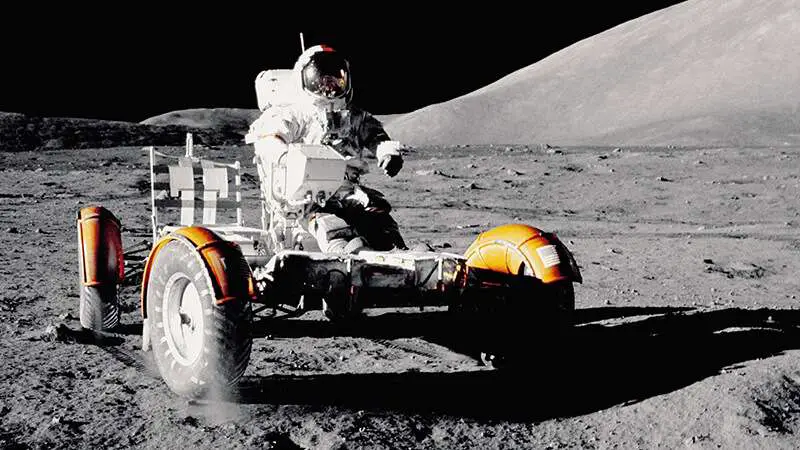
Just because you can’t use a telescope to see the flag doesn’t mean the Apollo Moon landings didn’t happen. There is plenty of evidence to support we landed on the Moon (and to disprove conspiracy theorists).
- The Lunar Module Descent Stages: The descent stages of the Lunar Modules used during Apollo 11 and subsequent Apollo missions are still on the Moon’s surface. The Lunar Reconnaissance Orbiter took photos of them!
- The Lunar Rover: The Lunar Roving Vehicle (LRV) used during the later Apollo missions by American astronauts is still on the Moon’s surface and has been photographed by the Lunar Reconnaissance Orbiter.
- The Lunar Laser Ranging Retroreflector Arrays: These were left on the Moon’s surface during Apollo 11, 14, and 15 missions. They are used to measure the distance between the Earth and the Moon.
- The Apollo Lunar Surface Experiments Package (ALSEP): This was a collection of scientific instruments left on the Moon’s surface during the Apollo 11, 12, 14, 15, and 16 missions, and provided valuable data on the Moon’s geology, seismology, and atmosphere.
- The Footprints and Rover Tracks: The footprints and tracks left by the astronauts and the Lunar Rover can be seen in photographs taken by various spacecraft, including the Lunar Reconnaissance Orbiter.
- The Moon Rocks: The Apollo missions brought back over 800 pounds of lunar rocks. These lunar samples of moon rock have been studied by scientists worldwide and have provided valuable insights into the Moon’s geology and history.
- The Astronauts’ Items: The astronauts left personal items on the Moon’s surface, such as flags, plaques, and family photos, which can be seen in photographs taken by various spacecraft.
These items provide strong evidence for the authenticity of the Apollo Moon landings and have been extensively studied and analyzed by scientists and researchers worldwide.
Alternative Methods to Observe the Moon
Let’s explore a couple of alternative methods to observe the Moon and its surface besides using a telescope to see the flag on the Moon.
Amateur Telescopes and Cameras
Although you can’t see the flag, your home telescope can reveal stunning lunar surface details. Pairing your telescope with a camera makes capturing these features quick.
Attach your camera to the telescope using a T-ring adapter or a smartphone mount, and you can start taking breathtaking photos of the Moon’s craters and mountains.
Stacking multiple images using specialized software like RegiStax can improve the final image’s quality and resolution.
Remote Telescopes and Online Services
To observe the Moon, consider using remote observatories or online services like Slooh and Worldwide Telescope. These platforms provide access to powerful telescopes around the world.
You can explore the lunar surface from your computer with high-quality equipment and real-time streaming capabilities.
These services often have built-in image processing tools, making it simple to capture and share your lunar observations online.
Frequently Asked Questions
Can you see the flag on the moon with a telescope?
No, you cannot see the flag on the Moon with a telescope. The flags planted by Apollo astronauts are too small and have been exposed to harsh lunar conditions for decades, making them impossible to detect from Earth with available telescopes.
How do we know the flag is still on the Moon?
The Lunar Reconnaissance Orbiter (LRO) has captured images of the Apollo landing sites from lunar orbit, including the flags left behind by astronauts. These images from NASA confirm that the flags are still on the Moon. It’s worth noting that the flags left on the Moon by the Apollo missions are likely to have faded due to the harsh conditions on the lunar surface, including extreme temperatures and radiation. Also, the flags are nylon, which doesn’t withstand the harsh environment of space.
Can the james webb telescope see the flag on the moon?
No, the James Webb Space Telescope (JWST) cannot see the flag on the Moon. The JWST is designed for deep space observations, focusing on distant galaxies, stars, and planetary systems. It does not have the capability to resolve small lunar objects or details on the Moon’s surface like the flags planted by Apollo astronauts. These flags are too small and close to the Moon’s surface to be within the JWST’s observational scope.
Does China have a flag on the Moon?
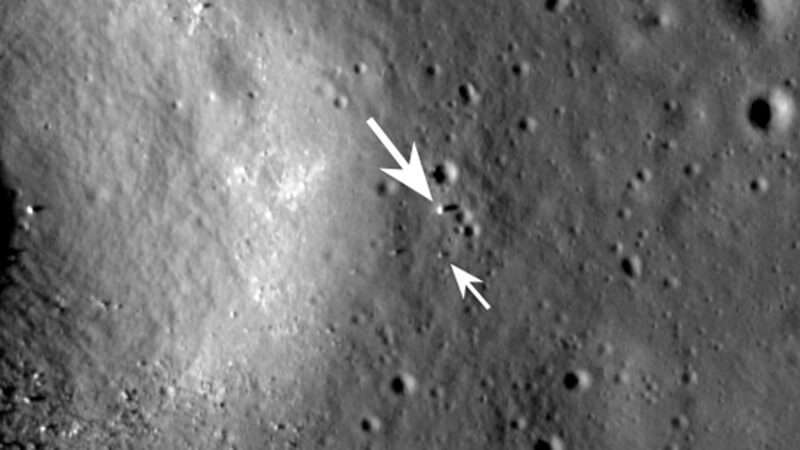
Yes, China placed its national flag on the Moon during the Chang’e 3 lunar lander mission in 2013.
The mission was China’s first soft landing on the Moon, and the flag was placed on the lunar surface by the Yutu rover. The flag’s special material can withstand harsh conditions on the Moon, such as extreme temperatures and radiation.
The flag’s placement on the Moon symbolizes China’s growing ambition and desire to become a major player in space exploration. The mission was also significant for China’s space program, which aims to establish a permanent manned lunar base in the coming decades.
What can we see on the Moon with a telescope?
With a telescope, you can see various surface features on the Moon, including craters, mountains, and valleys. Meteoroids and other space debris created the Moon’s craters. The craters range in size from tiny pits to large basins. Peaks on the Moon can reach heights of several miles. The Moon’s valleys, or rilles, are thought to have been formed by ancient lava flows. In addition to these features, you can observe the Moon’s changing phases as it orbits the Earth, from a thin crescent to an entire disk and back again.
How many flags are there on the Moon?
There are currently seven American flags on the Moon, left by the Apollo missions. Apart from that, China also left its national flag on the lunar surface during the Chang’e 3 mission. So in total, there are eight flags on the Moon.
Summary
Thank you for reading my article, “Can you use a telescope to see the flag on the Moon?”
Unfortunately, you cannot see the flag on the Moon with a telescope from Earth. The resolving power of Earthbound telescopes is currently insufficient to see such a small object at that distance.
For more realistic ambitions, read my articles on seeing planets with your telescope
And be sure to read my article Can you see the ISS with a Telescope?
NASA’s Lunar Reconnaissance Orbiter Camera (LROC) has captured images of the American flags planted during the Apollo missions, providing evidence of their presence on the Moon’s surface.
In the end, while viewing the flag on the Moon directly with a telescope from Earth is impossible, you can rely on historical records, eyewitness accounts, and LROC images to know it is there.




